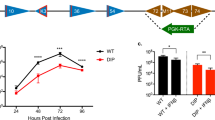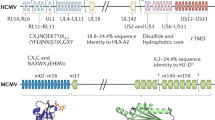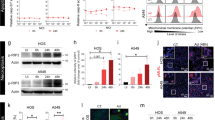Abstract
THERE are clearly two levels at which the immune response may intervene to induce protection against viral infection. Neutralising antibodies effectively limit spread of free virus in many situations, thus preventing reinfection. In a number of viral diseases, however, it is often not possible to cure the infection by even high titres of neutralising antibodies1,2. In such situations, recovery from infection may require the intervention of a cell-mediated immune response directed at the infected cell. Selective impairment of the host's immunity, for example, by thymectomy or by antilymphocyte serum, markedly increased mortality of mice infected with ectromelia3, and herpes simplex4,5. Macrophage suppression has had a similar effect6. In these cases recovery could be conferred by transfer of immune lymphoid cells (ref. 7 and B.R-Z., and A. C. Allison, unpublished). But the nature of the cells involved, and the mechanisms by which they act remain problematic. Our experiments were undertaken to evaluate the contribution of various types of cells to immune reactivity to cells infected with herpes simplex virus I in vitro.
This is a preview of subscription content, access via your institution
Access options
Subscribe to this journal
Receive 51 print issues and online access
$199.00 per year
only $3.90 per issue
Buy this article
- Purchase on Springer Link
- Instant access to full article PDF
Prices may be subject to local taxes which are calculated during checkout
Similar content being viewed by others
References
Allison, A. C., Ann. Inst. Pasteur, 123, 585–608 (1972).
Brier, A. M., Wohlenberg, C., Rosenthal, J., Mase, M., and Notkins, A. C., Proc. natn. Acad. Sci., U.S.A., 68, 3073 (1971).
Blanden, R. V., J. exp. Med., 132, 1035–1054 (1971).
Nahmias, A. J., Hirsch, M. S., Kramer, J. H., and Murphy, F. A., Proc. Soc. exp. Biol. Med., 132, 696–698 (1969).
Mori, R., Tasaki, T., Kimura, G., and Takeya, K., Arch. ges. Virusforsch., 21, 459–462 (1967).
Zisman, B., Hirsch, M. S., and Allison, A. C., J. Immun., 104, 1155–1159 (1970).
Blanden, R. V., J. exp. Med., 133, 1074–1104 (1971).
Perlmann, P., and Holm, G., Adv. Immun., 2, 117–193 (1969).
MacLennan, I. C. M., Transplant Rev., 13, 67–90 (1972).
Evans, R., and Alexander, P., Nature, 236, 168–170 (1972).
Lodmell, D. L., Niwa, A., and Notkins, A. L., J. exp. Med., 137, 706–720 (1973).
Rabinowitz, S. G., and Proctor, R. A., J. Immun., 112, 1070–1077 (1974).
Cole, G. A., Nathanson, N., Prendergast, R. A., Nature, 238, 335–337 (1972).
Glasgow, L. A., Arch. int. Med., 126, 125–134 (1970).
Green, J. A., Cooperband, S. R., and Kibrick, S., Science, 164, 1415–1417 (1969).
Boyum, A., Scand. J. clin. Lab. Invest., 21, 77–90 (supplement 97), (1968).
Author information
Authors and Affiliations
Rights and permissions
About this article
Cite this article
RAGER-ZISMAN, B., BLOOM, B. Immunological destruction of herpes simplex virus I infected cells. Nature 251, 542–543 (1974). https://doi.org/10.1038/251542a0
Received:
Issue Date:
DOI: https://doi.org/10.1038/251542a0
This article is cited by
-
Complement, viruses, and virus-infected cells
Springer Seminars in Immunopathology (1983)
Comments
By submitting a comment you agree to abide by our Terms and Community Guidelines. If you find something abusive or that does not comply with our terms or guidelines please flag it as inappropriate.



